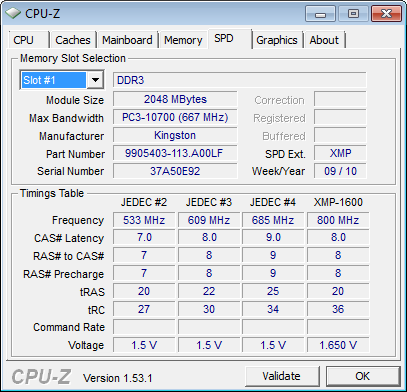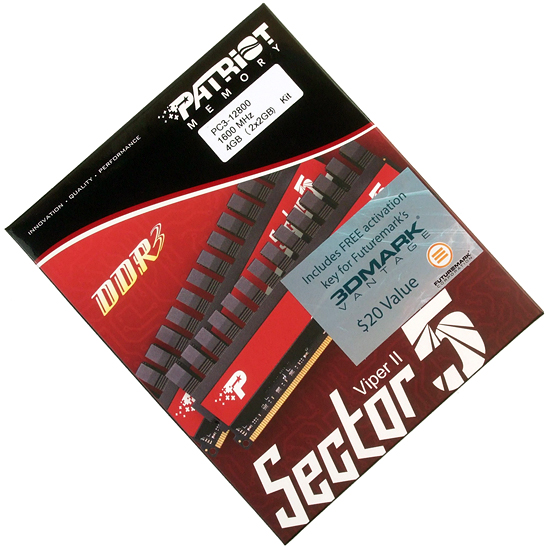Dual-Channel DDR3: Who Makes The Best 4GB Kit Under $150?
High-end RAM prices have fallen far faster than they have in the mainstream market, enticing mid-budget builders. As 4GB mainstream kits hover around $100, Tom’s Hardware asks the question “How much more can we get for a few dollars more?”
Kingston And Patriot
Kingston KHX1600C8D3T1K2-4GX DDR3-1600 CAS 8
Kingston’s HyperX T1 series represents its best parts, with 2.38”-tall heat spreaders meant to provide minimal operating temperature under any condition.
Yet, while we previously questioned Kingston’s decision to provide DDR3-1600 modules to compete against its competitors’ DDR3-2000 parts, a more important question might be whether or not the big, expensive heat spreaders are really useful for this particular memory. Kingston does, after all, sell standard HyperX modules with the same ratings and smaller heat spreaders at a 10% lower price.
XMP-1600 requires the full 1.65 volt limit Intel recommends not surpassing on its memory controller to support 8-8-8-20 timings. Prior to user intervention, motherboards will automatically configure this memory to DDR3-1333 CAS 9.
Patriot PVV34G1600LLKB DDR3-1600 CAS 8
Patroit’s DDR3-2000 was just a little above our $150 limit, forcing the brand to instead try to match the higher-speed parts of its competitors with a lower-latency DDR3-1600 kit.
Black extruded-aluminum heat spreaders and black circuit boards help the Viper II Sector 5 modules stand out from Patriot’s other parts, though only testing can prove the effectiveness of this design.
Get Tom's Hardware's best news and in-depth reviews, straight to your inbox.
A surprising second SPD value is given for a higher-than-rated voltage, while the rated DDR3-1600 CAS 8-8-8-24 at 1.65V is also XMP-supported. Motherboard auto-detection will force these to slower DDR3-1066 settings prior to BIOS adjustment.
-
neiroatopelcc And yet I would never recommend anyone to buy memory running faster than 1600mhz.Reply
Add another $50 and buy two cheaper ddr3-1600c9 sets instead. More beats faster.
-
ksa-_-jed the bottom line is there no big different worth the extra money.Reply
I think is better to stick with the 1600mhz -
jrharbort I'm still glad with my choice to stick with the crucial modules in all my builds for nearly a year now. Nice article, was very informative, but I don't think it will effect my overall choice on future builds.Reply -
mr_tuel I bought my OCZ 6GB 1600MHz triple-channel kit for $85 last May. It will now cost my ~$160 to buy another :-(Reply -
SchizoFrog What happened to Corsair and OCZ? This is just another article for you to advertise certain brands, shame on you Tom's...Reply -
neiroatopelcc I'm sure they're not present in the article, because they simply didn't want to send any modules in time.Reply
Besides, corsair is usually middle of pack, and ocz has compatibility issues on every second motherboard or something. Not the biggest of losses. -
madass "We recommend G.Skill’s Trident DDR3-2000 specifically for mid-budget overclockers who believe in the importance of memory speeds beyond those we’ve found to be beneficial to program performance."Reply
LOL
-
idisarmu 4gb is no longer the optimal capacity. RAM prices are going up component-wise. 4gb of DDR3 1600 was down to about 95-100 dollars at one point, but now the price has gone up $10-15. Meanwhile, the price of 2x4gb kits have gone down from about $420 to $260-300 (This is for ddr3 1333)Reply
I think that if someone is building a new PC, it is now better to invest in 8gb in a 2x4gb kit than it is to invest in 2x2gb. You will eventually upgrade to 8gb anyway (next year or in 2 years), so why don't you just buy the 8gb in 2 sticks for only a slight % increase of Cost/GB -
dalta centauri Here I am running 4gb of ADATA DDR2 ram at 800MHz and others have 250$ worth of ram in their computers. I think it's time to upgrade :DReply
(Darn, 300$ down the tube)




